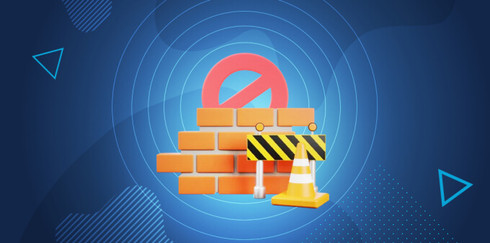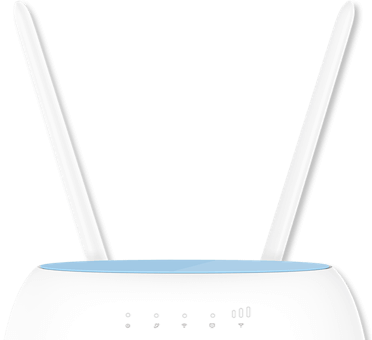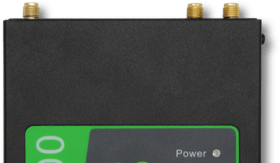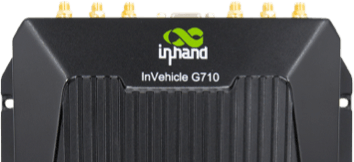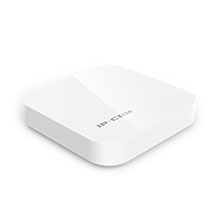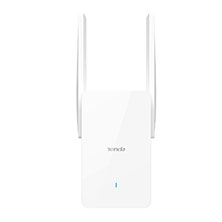What Materials Block WiFi Signal?
Why WiFi Signals Go Bad
Wireless internet makes it possible to access the internet from anywhere in your home or office. However, WiFi reliability usually varies throughout the building.
Routers, also called WiFi access points, transmit over-the-air radio waves (signals) to communicate with your wireless devices. Anything that interferes with those signals can degrade or block them. This is why you may experience a stronger WiFi connection in some rooms versus others.
Many obstacles exist in homes and offices that interfere with WiFi signals - the main culprit being building materials. In this blog, we'll be going over different materials that affect WiFi signals and ways to improve your connection.
Installers and Integrators
Take advantage of our system design and installation services. Learn more or call us for a free consultation: 1-800-969-8189
NOTE: If you struggle with poor cellular signal in addition to WiFi, a cell phone signal booster can help. They also help improve the performance of cellular routers.
Top 12 Materials that Interfere with WiFi Signals
While building materials are the worst WiFi signal blockers, they are not the sole culprits. Signal issues also arise from physical objects and electromagnetic interference from other devices. The following list ranks these materials from the most impactful to the least.
1 - Metal

The ultimate signal blocking material.
Metal is the hardest material to penetrate because it’s a conductor of electricity. What does electricity have to do with WiFi? Radio waves are electromagnetic, meaning that metal has the ability to absorb them.
Anything that has metal, such as metal blinds, doors, furniture, buildings, and walls, can greatly lessen or completely kill WiFi signal. The more metal there is between your WiFi router and the connected device, the worse the WiFi signal will be.
2 - Concrete Walls

WiFi signal does not mix well with concrete as it’s one of the thickest building materials. As a result, WiFi signal has a hard time passing through concrete walls and floors. Especially if they are coupled with metal laths.
The thicker the concrete, the harder it is for the signal to pierce through - even with the help of a WiFi booster (aka a WiFi repeater or WiFi extenders).
3 - Plaster and Metal Lath

Plaster is made up of lime, gypsum, or cement, that is used to coat walls and ceilings. Typically, the thickness is 5/8th of an inch for walls and 1/8th of an inch for floors. Even though plaster walls are not extremely thick, they will slow down the WiFi signal as it travels.
Many modern structures use metal laths in plaster to act as a framework for interior walls. Occasionally, it’s used for concrete ceilings and floors. When laths are used, more than 5/8th-inch of plaster can be applied. Since metal lath consists of metal and takes part in creating thicker walls, the WiFi signal can be greatly reduced or blocked.
4 - Ceramic Tile

Another common material used for walls and floors.
Like drywall, the WiFi signal weakens as it travels through ceramic tiles. Typically, mastic is used to install ceramic tiles on plaster or drywall. A combination of these materials increases the amount of WiFi interference.
5 - Windows and Tinted Glass

We know what you’re thinking… How can windows and glass affect my WiFi signal? They are transparent and not as thick as walls. But, don’t let their look deceive you.
While windows are great for letting the light in, they mess with your signal by reflecting it. Especially Low-E (low-emissivity) windows. They have a metallic film to help with energy consumption. Therefore, they can block and reflect the signal more than a clear window.
Tinted glass is designed with specific materials to block out the light and often come in an array of colors. Similar to Low-E glass, they sometimes have a metallic film which interferes with specific radio signals.
6 - Mirrors

Like windows, mirrors are also reflective. All mirrors are made up of a thin coat of metal on a piece of glass. Due to the metal backing, they cause electromagnetic interference.
The effect a mirror has on your WiFi signal depends on the size of the mirror. For example, a mirror wall will interfere with the WiFi signal more than a small decorative mirror.
7 - Drywall

Drywall is one of the most common building materials you will find in homes and businesses. It has the smallest amount of impact on your wireless signal.
Even though it doesn’t significantly affect the signal, it can slightly weaken it as it travels through the walls.
8 - Devices Operating on the 2.4 GHz Frequency

As mentioned earlier, wireless routers wirelessly send radio waves to communicate with your wireless devices. These radio waves operate on frequency bands 2.4 GHz, 5 GHz, and 6 GHz (on select devices).
The 2.4 GHz frequency band is a crowded area, creating a lot of noise. Many devices, such as baby monitors, cordless phones, wireless headsets, walkie-talkies, microwaves, garage door openers, and Bluetooth devices, also run under the 2.4GHz band.
Specific WiFi standards are in place to structure how WiFi devices communicate with each other to decrease signal interference and improve WiFi speeds. However, many of the devices mentioned don’t need an internet connection, so they don’t take part in the structure. As a result, WiFi signal strength decreases due to the noise.
9 - Neighbor’s WiFi Network

If you open your settings and look at the available wireless networks, how many different home network names (SSIDs) can you see? Those are your neighbor's WiFi networks. Any wireless network that is in close proximity to yours, can mess with your broadband connection.
The 2.4 GHz, 5 GHz, and 6 GHz bands consist of lots of WiFi channels that are used to send and receive data. If your neighbor’s router is using the same wireless channel as yours or an overlapping channel, your bandwidth and speed will be affected.
Most WiFi routers allow you to switch to a different channel to reduce the amount of interference. In addition, dual-band routers give you the ability to switch between the 2.4 GHz and 5GHz frequencies. This allows you to greatly reduce network interference.
Peplink MAX BR1 PRO 5G Dual-Band Cellular Router
- Built In 4G and 5G Cellular Modem
- Provides 2.4GHz & 5GHz WiFi Connectivity
- Speeds up to 4 Gbps
- WiFi 6 Technology
- For Fixed and Mobile Applications
The Peplink MAX BR1 PRO 5G is equipped with an LTE and 5G cellular modem. No matter where you are, you will get the best possible connection available. It's the perfect router for those wanting to cut the cord on their ISP or those in areas with limited internet options.
When connected to 5G, the router is capable of delivering speeds up to 4 Gbps down and 700 Mbps up. On 4G, it offers max download speeds of up to 2 Gbps and upload speeds of up to 150 Mbps. Built with top-of-the-line tech, it can be used in homes, businesses, and even vehicles.
Tenda Wi-Fi 6 AX3000 Dual-band Gigabit Router
- Features WiFi 6 (802.11AX) Technology
- Provides 2.4GHz & 5GHz Connectivity
- Ideal for Bandwidth Intensive Environments.
- Dual-Concurrent Data Speeds up to 2976Mbps (574Mbps/2.4GHz, 2402Mbps/5Ghz)
- Supports Up to 64 Devices
- Equipped With a 1.6GHz Dual-Core Processor
- IPv6 Supported
The Tenda RX9 Pro is everything you need for a safe, reliable, and fast WiFi connection for your home or office. With WiFi 6 and dual-band you can get speeds up to 3000Mbps, as well as enjoy a more reliable signal even through obstacles. Control the RX9 remotely with the Tenda app and keep an eye on your network from wherever you are.
10 - Water

Anything with large amounts of water, such as fish tanks, indoor waterfall walls, and the water inside human bodies, interfere with WiFi signals. How does water affect the WiFi signal?
The impurities in water make it a conductor of electricity, meaning that water has the ability to absorb WiFi signals. In addition, water reflects and refracts sound waves, causing them to take longer to travel between your devices and wireless router (and vice versa).
11 - Appliances

Home appliances, like refrigerators, dishwashers, stoves, ovens, and microwave ovens, are composed of electrical components and metals, which makes them a source of electrical interference.
12 - Furniture

Most houses and businesses have a ton of furniture in them: beds, dressers, couches, tables, chairs, desks, and more. Each item varies in size, thickness, shape, and material.
Any furniture item that blocks the router will diminish the signal as it travels from point A to point B. The denser and thicker the item, the weaker the signal will be.
Combatting WiFi Signal Obstruction
The obvious answer is to move your router to a better area with less obstruction. If using a dated router, upgrading it can instantly improve your connection. Newer routers are built with technology meant to increase performance.
Another option is upgrading the router's antenna to enhance signal transmission and reception. If that is not possible, range extenders and mesh networks are great solutions. They are designed to eliminate dead spots and improve signal quality in problematic areas.
Mesh Networks
Mesh networks significantly improve WiFi coverage by using multiple mesh nodes, cutting out dead spots. Mesh networks can be designed either for home WiFi or business WiFi use and come with a variety of node options.
Tenda EX12 Wi-Fi 6 AX3000 Whole Home Mesh System
- Whole Home WiFi 6 Coverage
- Next-gen WiFi 6
- Ultra-penetrating beamforming
- Seamless roaming
- Easy installation
- Covers up to 7000sq feet with 3 nodes
With the Tenda EX12 Mesh WiFi 6 System you can enjoy a stable internet signal all over your home or office. Connect multiple nodes to form a mesh network that will seamlessly allow your devices to roam from room to room. Total coverage has never been this easy.
IP-COM Wi-Fi AC1200 Enterprise Mesh System
- Includes an EW9 router and 2 EP9 nodes
- Covers up to 6,000 sq ft with 3 units
- Expandable up to 9 units to cover up to 18,000 sq ft
- Seamless roaming
- Beamforming
- Dual-Band speeds up to 1200Mbps
- Designed for small to medium businesses
- App management
The IP-COM WiFi AC1200 EW9 and EP9 units work together to wirelessly blanket offices, hotels, restaurants, and other small to medium businesses with fast, reliable WiFi. It uses an EW9 router and two EP9 nodes. With True Mesh and Beamforming, the units work together to cover up to 6,000 sq ft with reliable WiFi. The IP-COM Enterprise Mesh System can support many devices at the same time without lag. Advanced encryption technology ensures all data and devices are protected from attacks.
Range Extenders
Range extenders, on the other hand, extend the reach of your WiFi router. They do not work seamlessly but create a new, extended WiFi network for your devices to connect to. For example, if your original network was called Nacho network, the range extenders network would be called Nacho Network_EXT.
Tenda Range Extender
- Speeds of up to 1775Mbps
- Gigabit port for multiple connection options
- Best for homes and offices
- Superfast WiFi 6
- Automatic dual-band broadcasting
- Comes with 2 high gain dual-band antennas.
- Simple plug and play installation
- WPS button for easy connection
The Tenda A27 range extender offers unparalleled signal extension throughout your home or office. Simply plug it into the wall and press a button to connect the range extender to your router. With the A27, you can make sure everyone in your building is always connected to a super-fast, reliable internet signal.
How Far Should WiFi Reach?
Under optimal conditions, WiFi signal can reach about 150 feet indoors and 300 feet outdoors. Real-world results vary due to frequency range, strength of signal, and obstructions.
How is WiFi Signal Strength Measured?
The WiFi logo on your devices illustrates the strength of your WiFi signal, but it doesn't give you the strength measurement. Knowing the strength measurement can show you how much your signal is affected by certain obstacles.
There are many different ways to measure WiFi strength. Using dBm (decibel-milliwatts) measurements is the least complicated and most common method.
dBm is expressed in negative numbers; the signal strength can range from -30 to -90 dBm.
- -30 dBm: Represents the best WiFi signal possible. It's usually achieved by standing next to the WiFi router.
- -50 dBm: Anything within this range will experience an excellent signal.
- -60 dBm: Reliable signal strength.
- -70 dBm: Not a strong signal.
- -80 dBm: Unreliable signal strength.
- -90 dBm: A wireless connection is near impossible.
The closer you are to -30 dBm, the better and stronger the signal will be.
To measure your WiFi signal strength on your cell phone, tablet, or any wireless device, you can use the WiFi Analyzer - WiFi Signal Meter App for Android, or the WiFi Status App for Apple. The apps are extremely easy to use. You can conduct multiple tests in different rooms and see which building materials have the greatest impact on your WiFi performance.
Contact Us
Signal Boosters is a leading provider of cell phone signal boosters and WiFi products for homes, vehicles, and commercial buildings. We specialize in consumer-friendly kits as well as customized RF systems for cellular, public safety two-way radio, DAS, and WiFi.
We’re here to assist with any issues you might be experiencing with poor cell service. Contact us today at 1-800-470-6777.
Interested in Learning More? Check Out Our Cellular Info Hub / WiFi Info Hub

